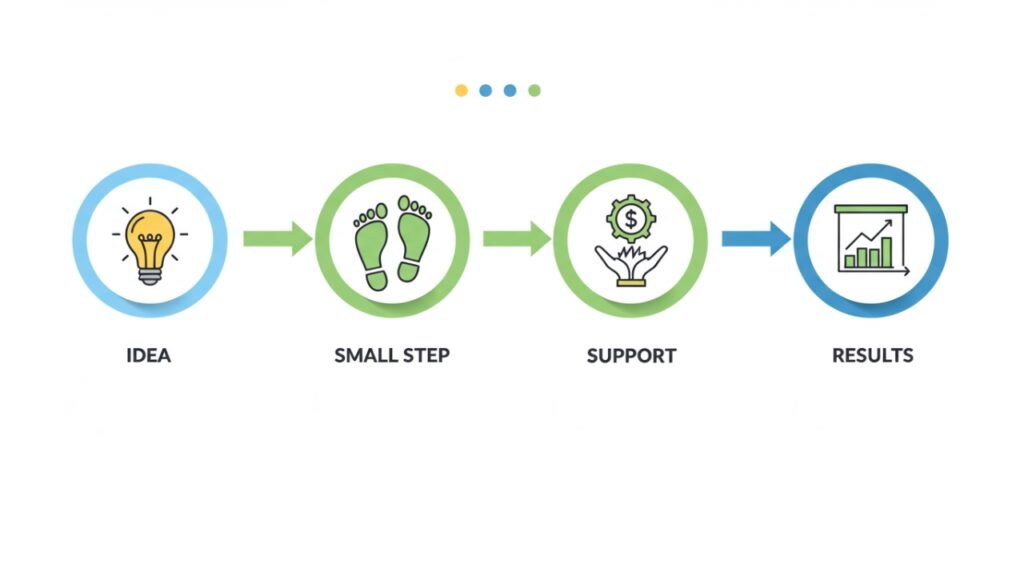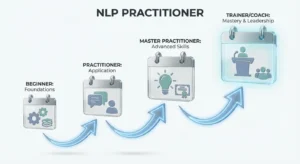Have you ever shared advice you knew could help someone, only to watch them ignore it or do the opposite? Maybe you offered a thoughtful suggestion, backed by experience, but it landed flat. You’re not alone. Giving advice that people actually follow is harder than it looks.
It’s not about how smart you sound or how many facts you can rattle off. The truth is, people don’t follow advice because it’s right; they follow it because it feels right to them. That’s where most well-meaning advice goes wrong. It’s offered at the wrong time, in the wrong way, or without the trust and clarity that make it stick.
Think of advice like a bridge. You might have the perfect solution on your side, but if there’s no safe, clear way for the other person to cross over and reach it, they’ll stay where they are confused, defensive, or politely nodding while nothing changes.
So read on, because in this guide, you’ll learn how to build that bridge the right way, step by step. You’ll see how top coaches, leaders, and communicators use simple tools from NLP, psychology, and practical coaching to turn good advice into action people take with confidence.
Why Most Advice Gets Ignored
You might have the best advice in the room, but if it’s delivered the wrong way, it goes nowhere. It’s not that people don’t want help, they do. But most advice fails because it doesn’t feel useful to the person hearing it. It feels like pressure. Or judgment. Or just noise. Let’s break down what usually goes wrong.
It’s given too soon.
Jumping in with a solution before someone feels seen or understood shuts the door fast. They don’t need a fix; they need to feel heard first.
It’s too much, too fast.
Dishing out a five-step life plan when someone just mentioned a rough day? Overkill. People follow small, clear steps, not information overload.
It’s disconnected from their reality.
Advice that doesn’t match their values, emotions, or current situation feels out of touch, even if it’s technically right.
It sounds like a lecture.
When advice is all “you should,” it often feels like criticism even when it’s not meant that way.
It’s based on logic, not emotion.
People don’t change based on facts. They move when something hits home emotionally. Logic supports the shift, but emotion drives it.
Build Connection First: The Foundation of Advice That Lands

Advice doesn’t matter if the person doesn’t trust where it’s coming from. You can have years of experience, the right answer, and a clear plan but if there’s no connection, it won’t land. People don’t follow advice from someone they don’t feel connected to. That’s why building trust always comes first.
Rapport Is Step One, Not an Add-On
Think of rapport as a doorway. Without it, your advice stands outside knocking. With it, the door is open and the message has somewhere to go.
This doesn’t mean being fake or overly friendly. It means meeting people where they are. Listen without interrupting. Match their pace. Notice their mood, not just their words. Even small shifts in your tone or body language can make a big difference.
You don’t have to agree with everything they say, but you do need to show that you understand where they’re coming from. Once someone feels heard, they naturally become more open.
Share Experience, Not Just Expertise
People listen more when they feel you’re on their side not just above them. Sharing a quick personal story or admitting a past mistake shows that you’ve been through something similar. It makes you real, not just “right.”
You don’t have to overshare. Just be human. A short example or “I’ve been there too” can go further than a long explanation.
Make It a Safe Space, Not a Sales Pitch
Nobody wants to feel judged or fixed. Advice works best when it feels like a partnership, not a correction. So stay curious. Ask more questions than you answer at first. Let them shape the conversation instead of pushing your point too soon.
This kind of trust doesn’t take hours. It just takes attention. And once you have it, everything you say carries more weight.
Handle Resistance with Empathy, Not Ego

Even when your advice is solid, people may push back. That doesn’t mean they’re being difficult; it means something about the advice doesn’t feel safe, clear, or aligned yet. Resistance isn’t the end of the conversation. It’s the start of a better one.
Why People Resist Good Advice
They feel judged.
If advice sounds like criticism, especially when emotions are already high, it can trigger defensiveness. Even helpful suggestions can feel like blame if the tone is off.
They’re not ready to change.
People move at their own pace. If someone’s still figuring out how they feel, advice can feel like pressure instead of help.
The advice doesn’t match their reality.
If what you’re suggesting feels too far from what they believe, value, or can manage right now, they’ll shut down even if they agree deep down.
They’ve tried and failed before.
Sometimes resistance comes from fear. If they’ve failed before, they might not want to try again, especially if the advice reminds them of that.
How to Respond Without Creating Tension
Stay curious, not controlling.
Instead of pushing harder, ask questions. Try:
“What part of that doesn’t feel right to you?”
“Is there something about that that feels off or frustrating?”
This keeps the door open instead of slamming it shut.
Validate their concerns without backing down.
You can show empathy without dropping your point.
Say this: “I get why that would be tough, it’s a big shift. But I still believe it’s worth trying in a way that fits your style.”
Offer options, not ultimatums.
If one idea doesn’t land, try a different angle. Give room to choose.
Example: “We can try that weekly goal-setting method or keep it even simpler and just track one habit a day. Which feels better right now?”
Don’t take it personally.
Resistance isn’t always about you; it’s about what the person is feeling. Stay grounded, calm, and focused on helping, not winning.
Leave space to think
Sometimes the best move is to pause and come back later.
Say this: “No rush. Sit with it, and we’ll check in again when it feels right.”
Deliver Advice at the Right Time, in the Right Way

Even great advice, given at the wrong moment, can fall flat or worse, backfire. Timing and setting matter more than most people think. When advice feels rushed, forced, or poorly timed, people tune out. But when it’s delivered at the right moment, in the right way, it lands with impact.
Why Timing and Delivery Make All the Difference
People can’t hear clearly when they’re overwhelmed.
If someone’s stressed, distracted, or emotionally flooded, they’re not in a place to take in new ideas. Advice will feel like noise, not help.
The setting shapes how advice is received.
Tough feedback in front of others? Risky. A big idea dropped in the middle of a rushed conversation? Easily forgotten. The wrong environment can make the best advice feel off.
When advice feels uninvited, it’s often ignored.
Even if they like and respect you, people need to want to hear what you have to say. If it feels forced into the conversation, it won’t stick.
How to Time and Deliver Advice So It Hits
Choose the right moment.
Look for cues. Are they calm, open, and paying attention? That’s your window. If they’re in a hurry, irritated, or distracted, wait.
Try this: “Do you want to talk through something now, or would later be better?”
Pick the right setting.
Private conversations build safety. Casual environments create ease. Choose a setting that matches the weight of what you’re sharing.
Example: Give serious advice in a one-on-one. Lighter tips can work in everyday moments, like during a walk or coffee break.
Ask before you offer.
Always check first. It shows respect and gives them a moment to mentally prepare.
Say this: “I have a thought, would it be okay if I shared it?”
Simple, but powerful.
Match your tone to the message.
If the advice is encouraging, keep your tone warm. If it’s corrective, stay calm and supportive, not sharp or cold.
Pause when needed.
You don’t need to get everything out in one shot. Sometimes less is more. Leave space for questions, reactions, or silence.
Try this: “Let me stop there for a second, what are you thinking right now?”
From Insight to Action: How to Turn Advice Into Results

Advice alone doesn’t create change. Action does. The real skill isn’t just in what you say, it’s in helping someone take that first step. That’s where transformation happens. But it’s easy to assume someone will “get it” and run with it. Most don’t. They need help turning insight into something they can actually do.
Why Advice Often Stays Just an Idea
There’s no clear next step.
Even if the advice makes sense, people may not know how to apply it. They need more than just a good idea; they need a starting point.
It feels too big.
A great plan can still feel overwhelming. If the first step is unclear or feels too hard, people put it off.
Nobody’s checking in.
Without support or accountability, it’s easy to forget or give up when things get uncomfortable.
How to Turn Advice Into Action
Break it down into one small, doable step.
Make it easy to start. Ask:
“What’s one small thing you can try today?”
“What would this look like if you made it super simple?”
Example: Instead of “You need to rebuild your daily routine,” say, “Let’s start by picking one thing you’ll do each morning, no matter what.”
Let them choose the step.
People are more likely to follow through when they pick the action. Offer a few options if needed, but let them decide what feels right.
Say this: “Out of everything we talked about, what feels doable right now?”
Use follow-up to create momentum.
Change doesn’t happen in one conversation. Offer light follow-up, not pressure, just presence.
Try this: “Let’s check in next week and see how it’s going. Want me to shoot you a message?”
Reinforce the win, no matter how small.
Progress builds confidence. Celebrate effort, not just results. Even a small shift deserves credit.
Say this: “I’m proud of you for doing something different. That’s how change starts.”
Conclusion: What Makes Advice Matter
The truth is, giving advice that actually sticks isn’t about having the smartest answer; it’s about how you connect, how you communicate, and how you guide people from idea to action.
We’ve all seen what happens when advice is rushed, forced, or dropped into the conversation without trust. It gets ignored. But when you slow down, ask first, listen well, and offer something real, something simple, human, and useful, people lean in. They remember it. They act on it.
It’s not about telling people what to do. It’s about helping them see it for themselves, feel safe enough, and take that first small step with confidence.
Because when advice is clear, honest, and timed right, it doesn’t just sound good, it works.





